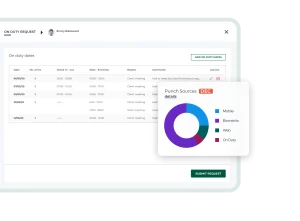Every workplace has its challenges, but few test leadership like insubordination. When an employee openly defies authority, it disrupts operations, damages morale, and erodes trust. The tricky part? Handling it firmly while staying fair and legally compliant.
Managers often wonder: Should they confront insubordination immediately, or should they give it time? The answer usually lies somewhere in between. Reacting impulsively risks escalating conflict, but ignoring the problem sets a dangerous precedent. The balance comes from structured strategies that maintain respect and accountability while ensuring business goals stay on track.
Proactive Strategies
Dealing with insubordination starts long before it ever happens. A strong company culture reduces its likelihood. Employees need to know expectations, and they also need to feel heard.
Clarity is everything. When roles, responsibilities, and boundaries are unclear, employees tend to test the limits. Transparent communication and consistent reinforcement of company policies help prevent misunderstandings that often lead to insubordination.
Leaders should also model the behavior they expect from others. Employees notice when managers cut corners, dismiss feedback, or show favoritism. A leader who demonstrates fairness and consistency builds credibility—and credibility is often the antidote to defiance.
Recognizing and Addressing Insubordination

Not all defiance is created equal. Sometimes it’s passive—like ignoring deadlines or refusing to attend meetings. At other times, it’s an outright refusal to follow direct instructions. Recognizing these early signs is critical.
Addressing insubordination starts with context. Ask yourself: is this a one-off emotional outburst, or is it part of a pattern? An isolated incident might require a private conversation. Repeated defiance, however, often demands a more formal approach.
Here’s a real-world example: A retail chain manager noticed a high-performing employee began ignoring shift-change requests. Instead of issuing an immediate warning, the manager held a conversation and discovered the employee was burned out. By offering flexible scheduling, the insubordination stopped, and performance improved. Sometimes, what appears to be rebellion is actually a cry for help.
The Formal Disciplinary Process
When informal correction fails, the formal process begins. This isn’t about punishment—it’s about protecting the organization while giving employees a chance to correct their behavior.
Formal discipline should always be consistent. If one employee is disciplined for defiance while another is not, accusations of favoritism or bias can arise. Consistency demonstrates fairness and reinforces workplace standards.
The process also needs documentation at every step. Written records protect both the company and the employee. If the case ever reaches arbitration or legal review, documented proof of the steps taken becomes invaluable.
Conducting a Thorough Investigation
Before taking any official action, gather facts. Rushing to judgment can backfire. A thorough investigation reveals that employees perceive leadership as valuing objectivity.
Start by collecting accounts from witnesses, supervisors, and the employee involved. Avoid framing questions in a way that assumes guilt. Instead, focus on open-ended queries like, “Can you walk me through what happened?”
One HR manager from a healthcare company shared how skipping this step nearly cost them in court. An employee was terminated for refusing a task, but no one documented that the task violated union rules. Because of poor investigation, the company ended up settling. Thoroughness protects everyone.
Implementing a Progressive Discipline Framework
Progressive discipline is not just corporate jargon—it’s a roadmap. It ensures employees are given fair opportunities to correct behavior before harsher measures come into play.
This framework typically begins with a verbal warning, followed by written warnings, suspension, and ultimately termination if no improvement is made. Each step escalates in seriousness, emphasizing that change is not optional.
The benefits of progressive discipline are twofold: it demonstrates fairness, and it reduces the risk of wrongful termination claims. Employees cannot argue they were blindsided when the process is straightforward and well-documented.
Holding the Formal Disciplinary Meeting
Disciplinary meetings are uncomfortable, but how they are conducted sets the tone. A rushed or hostile meeting can inflame tensions, while a structured and respectful approach encourages cooperation.
Start with facts, not emotions. Outline the behavior, reference policies, and explain why it’s unacceptable. Then, give the employee a chance to respond. This not only provides context but also demonstrates fairness.
For example, one tech company HR director described how an employee accused of insubordination used the meeting to reveal a manager’s bias. The discussion uncovered larger issues within the team, and instead of losing a valuable employee, the company resolved systemic problems.
Crafting and Implementing an Action Plan

Discipline without follow-through is wasted effort. An action plan transforms a warning into a roadmap for improvement.
An effective plan includes measurable goals, clear timelines, and ongoing support. For example, if an employee refused to follow reporting protocols, the plan might consist of weekly check-ins with a supervisor until compliance becomes consistent.
Documenting the plan ensures accountability. Both employee and manager should sign it, acknowledging their roles. This way, progress (or lack thereof) is trackable and transparent.
Legal and HR Considerations Throughout the Disciplinary Process
Employment law is the invisible thread running through every disciplinary step. One misstep, and the company may face costly litigation.
Always consult with HR and, when necessary, seek legal counsel before escalating any action. Ensure that discipline does not conflict with union agreements, anti-discrimination laws, or whistleblower protections.
Case law is filled with examples of companies losing lawsuits because they failed to follow due process. From wrongful termination claims to retaliation lawsuits, the risks are real. Staying aligned with HR best practices shields both leadership and the organization.
Handling Severe Cases
Sometimes, insubordination is so severe that immediate action is the only option. Physical threats, harassment, or refusal to perform critical safety tasks cannot wait for progressive steps.
In such cases, suspension pending investigation is often the safest course of action. It removes the immediate threat while allowing time to collect facts.
Take the case of a manufacturing plant employee who refused to follow safety protocols, endangering coworkers. Immediate suspension prevented potential injury and gave leadership the time to decide on an appropriate course of action. Severe cases require swift and decisive responses to protect the workplace.
Conclusion
Insubordination isn’t just about defiance—it’s about respect, culture, and leadership. How leaders respond determines whether the workplace grows stronger or fractures under strain.
The key lies in consistency, fairness, and documentation. Proactive strategies prevent many issues, but when insubordination occurs, a structured disciplinary process ensures accountability and maintains a transparent chain of command. By thoroughly investigating, applying progressive discipline, and considering legal implications, companies can protect both their employees and their own integrity.
Leaders who handle insubordination with fairness and firmness not only resolve conflict but also reinforce a culture of respect that endures long after the incident is over.
FAQs
Insubordination occurs when an employee willfully refuses to follow a lawful and reasonable instruction from their supervisor.
Address it quickly but fairly. Begin with a conversation, then follow formal disciplinary steps if the behavior continues.
Yes, especially in severe or repeated cases. Termination usually follows a progressive discipline process unless safety or legal issues are involved.
Clear communication, strong leadership, and consistent application of workplace policies reduce the chances of insubordination developing.
HR ensures that the disciplinary process adheres to company policy, employment law, and best practices for fairness and thorough documentation.




